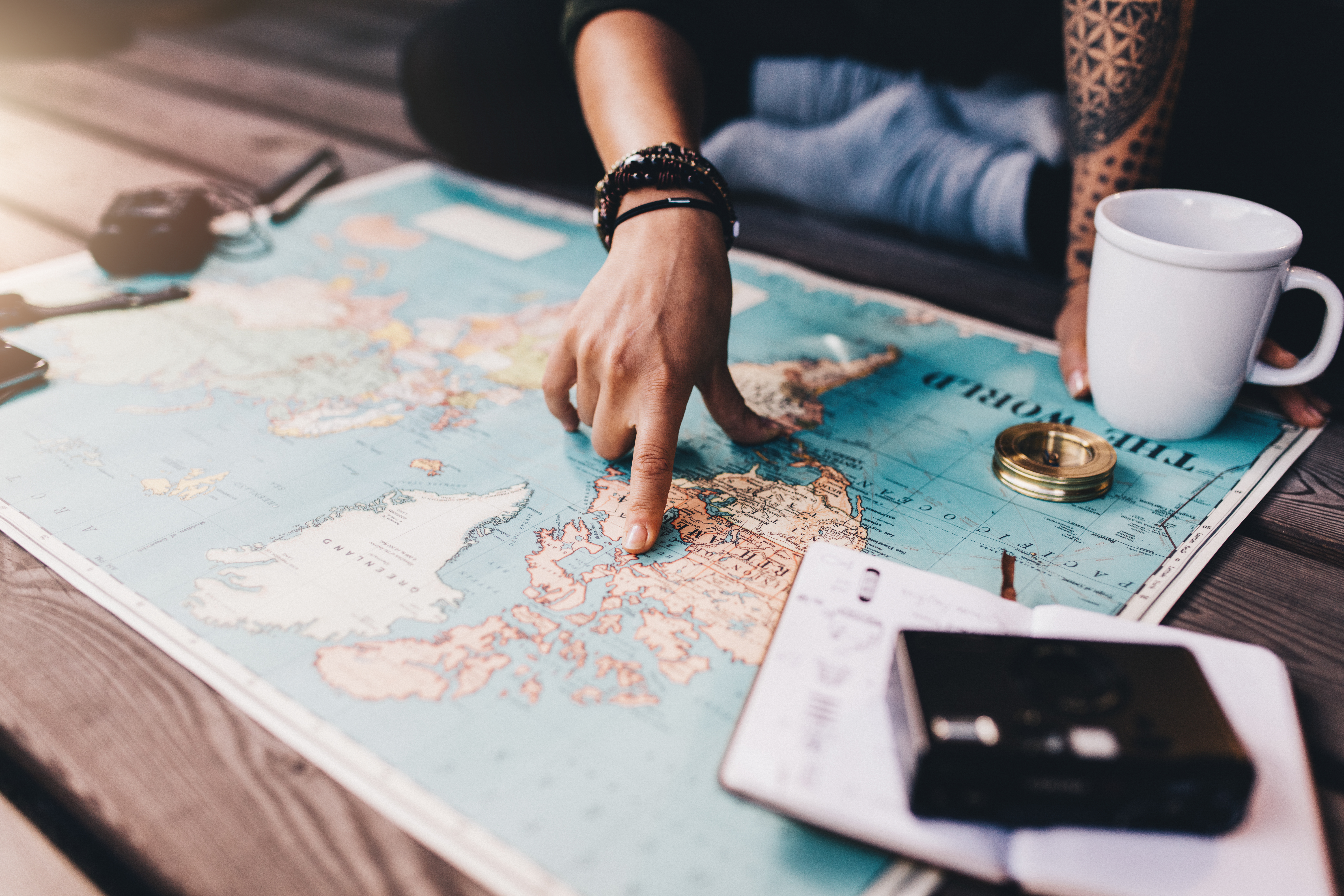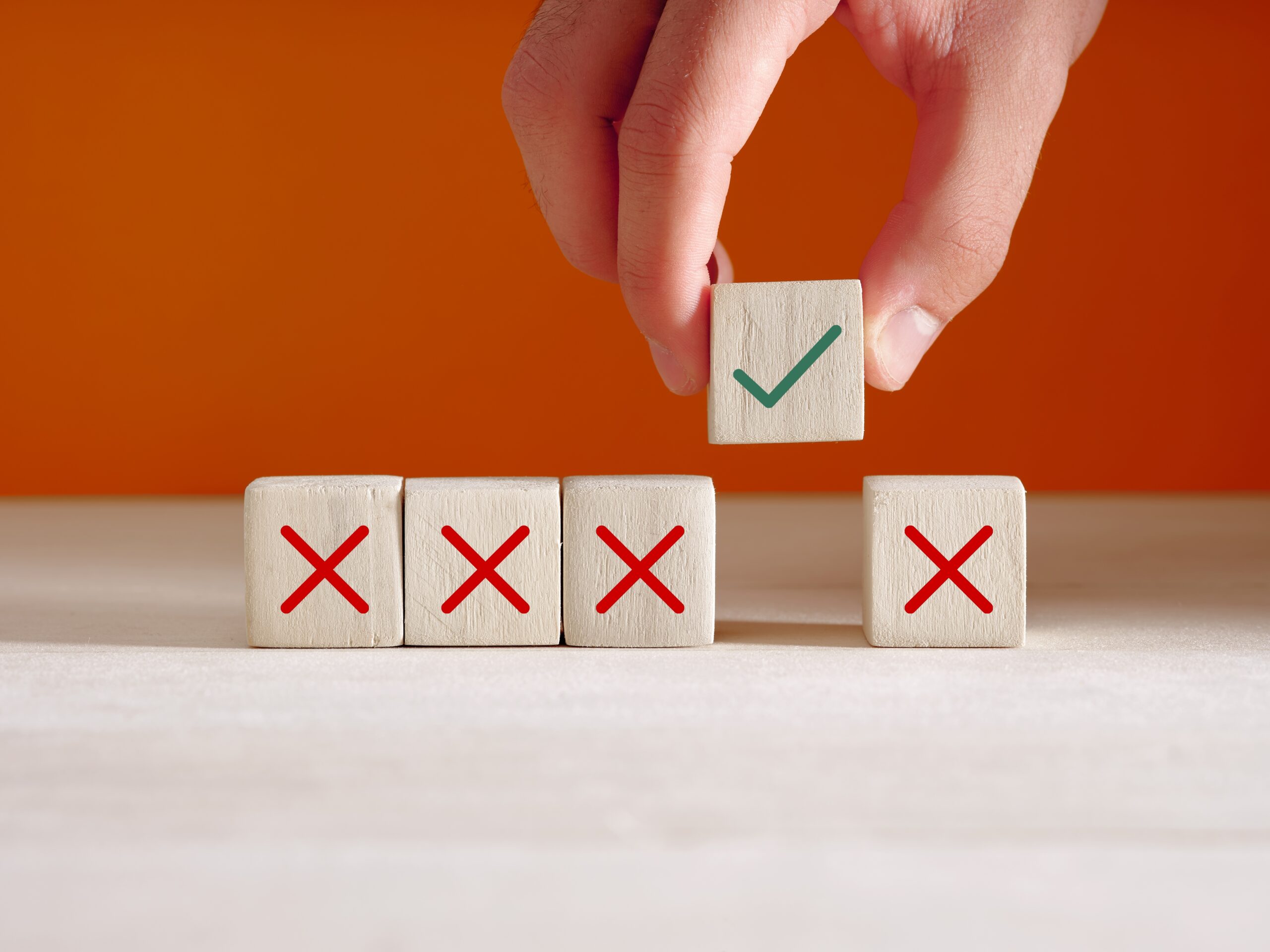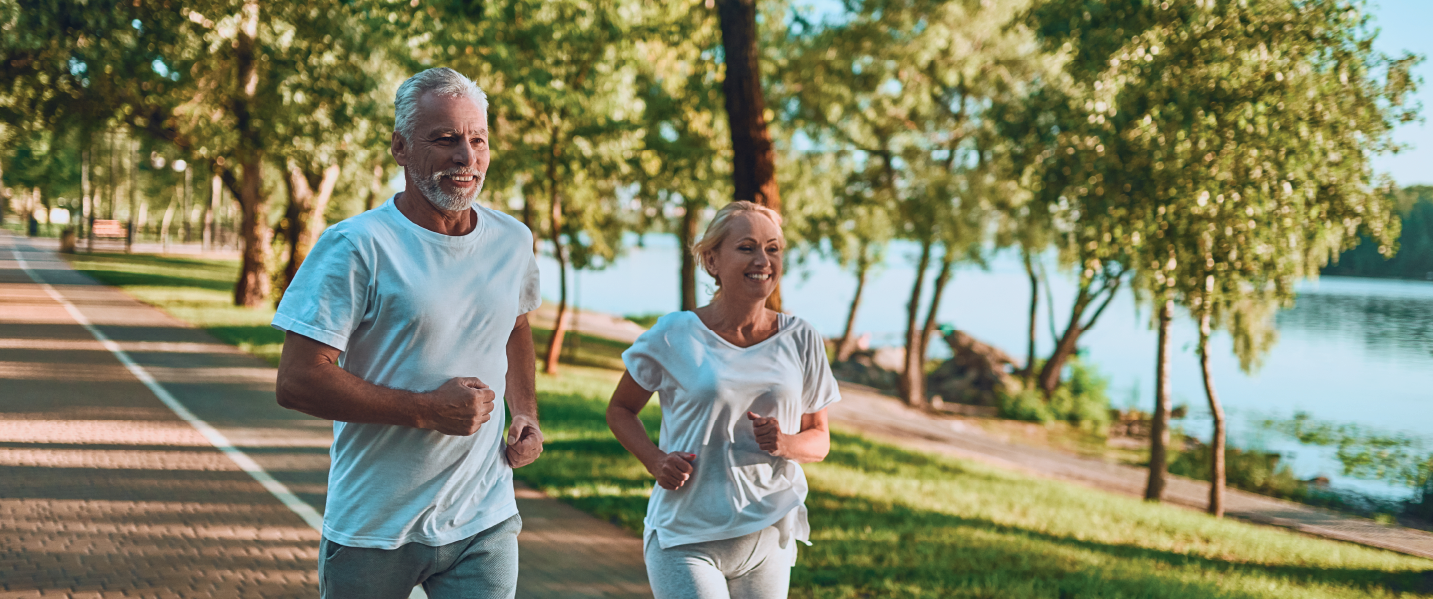4 Exercises for Urinary Incontinence Relief
Discover effective exercises to help alleviate urinary incontinence and improve bladder control.
Understanding Urinary Incontinence
Urinary incontinence is a common condition that affects many individuals. Understanding the causes and symptoms of urinary incontinence is the first step towards managing and finding relief from this condition.
One of the main causes of urinary incontinence is weak pelvic floor muscles. These muscles play a crucial role in supporting the bladder and controlling urine flow. When these muscles are weak, it can lead to urine leakage during activities such as coughing, sneezing, or laughing. Hormonal changes, such as those that occur during pregnancy and menopause, can also contribute to urinary incontinence. Additionally, nerve damage caused by conditions like diabetes or multiple sclerosis can affect the bladder's ability to function properly.
The symptoms of urinary incontinence can vary depending on the individual and the underlying cause. Some common symptoms include frequent urination, sudden urges to urinate, urine leakage during physical activities, and waking up multiple times during the night to urinate. It's important to consult with a healthcare professional for an accurate diagnosis and to determine the best course of treatment for your specific situation.
Benefits of Exercise for Urinary Incontinence
Exercise is an effective and natural way to manage and reduce the symptoms of urinary incontinence. Regular exercise can help strengthen the pelvic floor muscles, improve bladder control, and reduce the frequency and severity of urine leakage. Additionally, exercise can also help maintain a healthy weight, which can further alleviate the pressure on the bladder and reduce the risk of urinary incontinence.
Incorporating exercises that target the pelvic floor muscles, such as Kegel exercises, can significantly improve bladder control and reduce urine leakage. These exercises involve contracting and relaxing the muscles that control urine flow, helping to strengthen them over time. It's important to consult with a physical therapist or healthcare professional before starting any exercise program to ensure you are performing the exercises correctly and to determine the most suitable exercise routine for your needs.
4 Effective Exercises for Urinary Incontinence Relief
1. Kegel exercises:
These exercises involve contracting and relaxing the pelvic floor muscles. Start by squeezing the muscles as if you are trying to stop the flow of urine, hold for a few seconds, and then release. Repeat this exercise multiple times a day. Please note that kegels can be done lying down, sitting, or standing. For a detailed demonstration, you can watch this YouTube video on Kegel exercises.
2. Bridge pose:
Lie on your back with your knees bent and feet flat on the floor. Slowly lift your hips off the ground, engaging your pelvic floor muscles. Hold for a few seconds and then lower your hips back down. Repeat this exercise for several repetitions. You might consider attending a yoga class to learn more about proper technique, or watching a video by a trained professional for guidance.
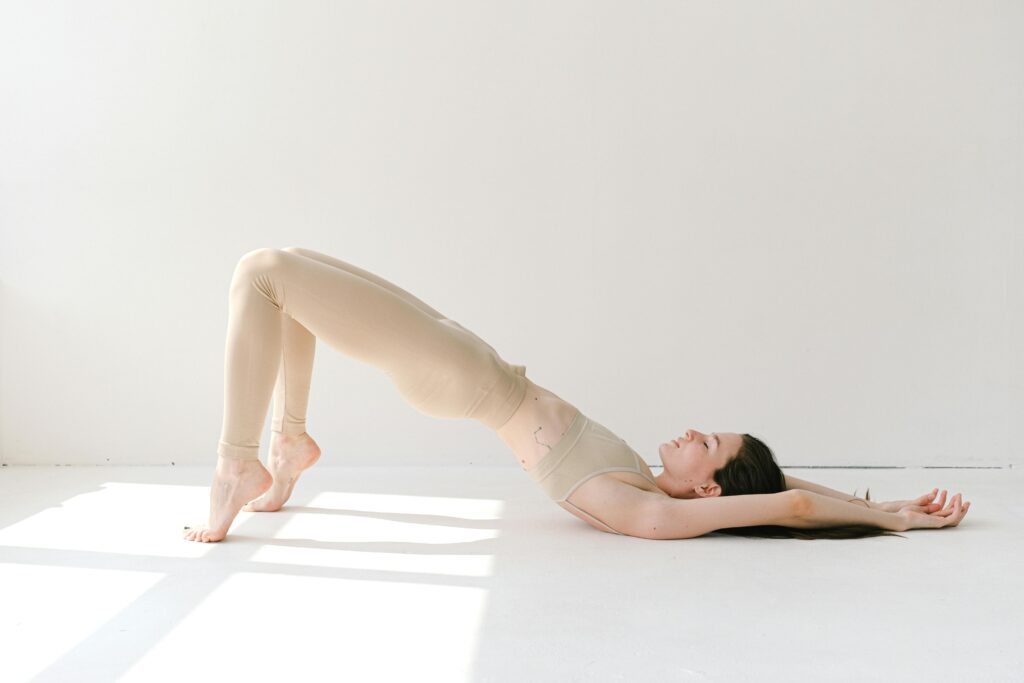
3. Squats:
Stand with your feet shoulder-width apart. Slowly lower your body into a squatting position, keeping your heels on the ground. Engage your pelvic floor muscles as you squat. Hold for a few seconds and then return to the starting position. Repeat this exercise for several repetitions.

4. Chair Knee Raises:
Sit in a chair, lift each knee to waist height ten times, holding for two seconds each. This strengthens the core and supports bladder health.
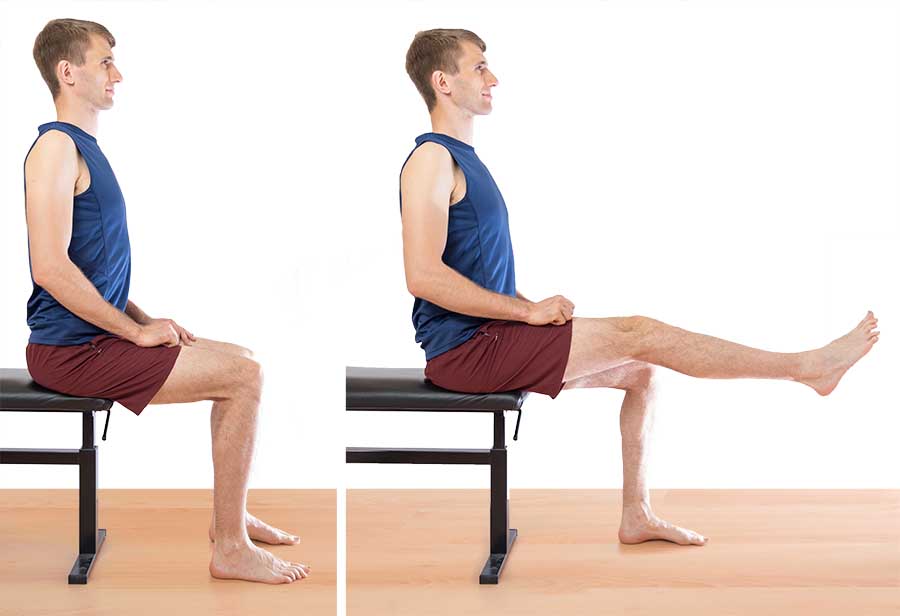
Remember to start slowly and gradually increase the intensity and duration of these exercises. It's important to listen to your body and not push yourself too hard. Consistency is key when it comes to seeing improvements in urinary incontinence symptoms.
Tips for Incorporating Exercises into Your Routine
Incorporating exercises into your daily routine can help ensure consistency and maximize the benefits for managing urinary incontinence. Here are some tips to help you get started:
- Schedule exercise sessions: Set aside specific times during the day dedicated to performing your exercises. This can help you establish a routine and make it easier to stick to your exercise plan.
- Start small: If you're new to exercise or have been inactive for a while, start with shorter exercise sessions and gradually increase the duration and intensity over time. This can help prevent injury and allow your body to adjust to the new routine.
- Mix it up: Keep your exercise routine interesting by incorporating a variety of exercises that target different muscle groups. This can help prevent boredom and keep you motivated to continue with your exercises.
- Seek guidance: If you're unsure about how to perform certain exercises or want personalized guidance, consider working with a physical therapist or healthcare professional. They can provide expert advice and ensure you're performing the exercises correctly.
- Stay consistent: Consistency is key when it comes to seeing improvements in urinary incontinence symptoms. Aim to exercise regularly, ideally several times a week, to maintain the strength and tone of your pelvic floor muscles.
Don't wait any longer to start living a more comfortable, confident life.
If you are concerned about incontinence, you may want to consider using continence products. Discover our range here.
Navigating Incontinence Challenges: Travel Edition
Embarking on a journey is an exciting adventure, and for those managing incontinence, it can present unique challenges. But fear not! With a bit of careful planning and a positive outlook, you can make the most of your travels without letting continence care become a roadblock. In this blog post, let's dive into some practical tips and strategies for navigating these challenges while on the road.
Plan Ahead:
Before setting off on your adventure, take some time for thorough planning. Look into restroom locations, their accessibility, and availability at your destination. Consider accommodations with private bathrooms and proximity to public facilities. Pack more supplies than you think you'll need, including absorbent continence care products, to cover the entire length of your trip. It also would be a good idea to pack the more absorbent version of your chosen incontinence product. This thoughtful preparation ensures that you're well-equipped to manage comfort and absorbency throughout the duration of the travel, contributing to a smoother and more relaxed travel experience. Check out our blog post on the “Understanding the different stages of incontinence and choosing the right products” for support on the different options available.
'Just Can't Wait Card'
The 'Just Can't Wait Card' is a free and widely recognized tool supported by many businesses. It grants you access to restrooms not usually available to the public. It is a simple, discreet way to let others know that you may urgently need access to a restroom. By ordering this card at Just Can’t Wait Cards from Bladder & Bowel UK - Bladder & Bowel UK (bbuk.org.uk), you're equipping yourself with a tool that can make a real difference in everyday situations.
Choose the Right Transportation:
Select modes of transportation that make restroom access convenient. Trains often have onboard facilities, while airlines can offer accessible restrooms. When flying, consider reserving an aisle seat and choosing a seat in the front or end of the plane for easier access to restrooms on the plane. If you're driving, plan your route with regular rest stops in mind.
Pack a Travel Kit:
- Spare Underwear:
Pack enough pairs to cover the duration of your trip, plus a few extras.
Carry a travel-sized pack of gentle, fragrance-free wipes for a quick and refreshing clean. Look for wipes that are suitable for sensitive skin to prevent irritation.
- Disposable Bags:
Include small, discreet disposable bags for the hygienic disposal of used incontinence products. This ensures a discreet and odour-free solution when proper disposal facilities are unavailable.
- Hand Sanitizer:
Maintain hand hygiene with a travel-sized hand sanitizer. Choose one with a high alcohol content for effective germ elimination, especially when restroom facilities may not have soap and water.
- Moisturizer or Barrier Cream:
Protect your skin by including a moisturizer or barrier cream. This helps prevent irritation and promotes skin health, especially during extended travel periods.
- Laundry Facilities Nearby:
Before your journey, take a moment to identify nearby laundromats or laundry facilities along your route. Knowing their locations can be especially handy for longer trips, ensuring you have access to laundry services if needed. For longer journeys, also pack a small amount of travel-sized laundry detergent. This allows you to wash and refresh your underwear as needed, ensuring a constant supply of clean options.
Stay Hydrated, but avoid Triggers:
Staying hydrated is essential, particularly while traveling. However, it's important to be mindful of triggers that may affect your incontinence. To minimize the frequency of bathroom visits, consider moderating your intake of caffeine and alcohol. Instead, choose water-rich foods to support hydration, and keep a reusable water bottle on hand. This way, you can stay properly hydrated without overindulging in beverages that might exacerbate incontinence. Read more about the vital link between proper hydration and urologic health, understanding its significance and benefits - Why is good hydration important for urologic health? (id-direct.com)
Utilize Technology:
Make technology work for you. Smartphone apps and websites can assist in finding nearby restrooms, planning routes with accessible facilities, and even offering real-time information on restroom availability. This tech-savvy approach is especially useful in unfamiliar areas. For example, “Restroom Finder” is a user-friendly app designed to assist you in finding clean and accessible restrooms. With this app, you can easily locate facilities based on user reviews and ratings, ensuring a more informed and comfortable restroom experience while on the go.
Stay positive and enjoy your trip! Traveling with incontinence demands thoughtful preparation, but it certainly shouldn't hold you back from exploring the world. By planning ahead, staying organized, and maintaining a positive attitude, you can navigate incontinence challenges and relish the enjoyment of travel without compromise. Remember, with the right mindset and strategies, the world is still yours to explore. Safe travels!
Your Simple Guide to Understanding Incontinence Stages and Choosing the Right Products that Suit You
Introduction
Managing incontinence can be challenging, but the good news that it's crucial to recognize that it's a common and manageable condition. It's a journey unique to each individual so this blog aims to explain the significance of understanding the diverse stages of incontinence and how selecting the appropriate products can empower you to regain control, confidence, and an active lifestyle. Let's break it down and explore the products that can help you or your loved ones manage this situation more comfortably.
Stage 1: Occasional incontinence or stress incontinence
If you're experiencing occasional leaks, particularly during activities like sneezing or coughing, consider using incontinence pads or liners with light absorbency. These discreet shields effortlessly fit into your regular underwear, effectively managing minor leaks without any hassle. When delving into the frequently asked question, "Can stress cause frequent urination?", in our blog, we explore the intricate connection between mental well-being and bladder health, providing valuable insights and improvement tips.
The products can be worn in your own underwear.
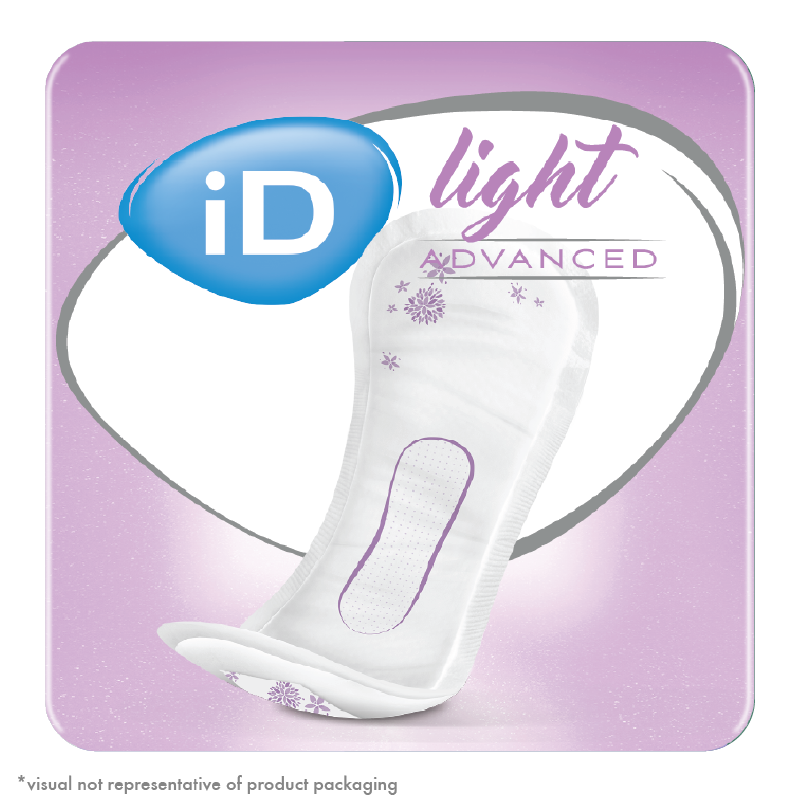 |
iD Light Advantages:
- Discreet and comfortable protection.
- Provides a sense of security during everyday activities.
- Helps avoid awkward moments that can arise from unexpected leaks.
Do you want a 20% discount on your first order?
Receive incontinence tips, expert advice, and promotions by email.
Stage 2: Moderate or urge incontinence
If you find yourself dealing with more frequent and sudden urges to use the bathroom, then it could be time for something with a bit more defence. Look for absorbent pads or pants with higher absorbency. They not only provide better protection but also control any unwanted odours, letting you go about your day confidently.
If you are still active and want maximum protection, then consider pants with higher absorbency. However, you don’t have to let your life be ruled by bladder weakness. You can read our blog about a step-by-step guide to some bladder control exercises that may help improve your symptoms: Easy Pelvic Floor Exercises: how to strengthen weak bladder muscles (id-direct.com)
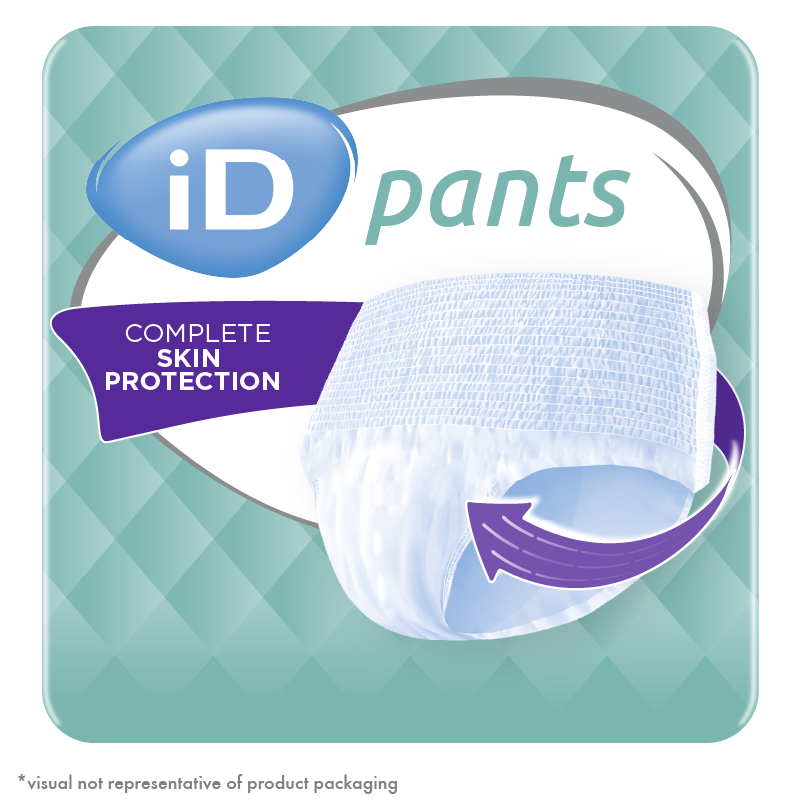 |
iD Pants Advantages:
- Improved absorbency and protection against moderate leakage.
- Improved odour control for increased confidence.
- Elasticated waist and leg openings for a secure and comfortable fit. (for iD Pants)
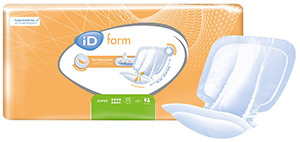 |
Stage 3: Severe incontinence or overflow incontinence
In this stage, where leaks become more constant with more urine, then it could be time for the next level of protection. Highly absorbent adult all-in-one style or briefs are your go-to. They offer maximum absorbency, adjustable tabs for a custom fit, and advanced anti-leak features to keep you feeling secure. The constant contact with urine or faeces can result in skin breakdown, inflammation, and infections. It's crucial to address these concerns promptly to maintain skin health and prevent complications. For further insights into incontinence and its impact on skin integrity, read the interview with Prof. Dimitri Beeckman titled "Incontinence and Skin Integrity (AID)."
For maximum protection, we recommend our Slips wall-in-one products.
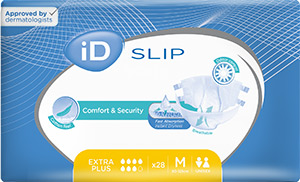 |
iD Slip Advantages:
- Maximum absorbency for strong leakage protection and long-lasting comfort.
- Provides excellent containment, reduces the risk of leakage.
- Adjustable tabs for a secure and custom fit.
Stage 4: Faecal incontinence
If you're dealing with faecal incontinence, where it's about solid waste, it's essential to note that stool is not absorbed by a product this is designed primarily for fluids. Thus, we recommend choosing products with lower absorption and to change them more often. If you're still very mobile, then iD pants could be a good option. For mobile, consider an all-in-one product like the iD Slip.
Advantages:
- odour control to maintain freshness and discretion.
- Soft and hypoallergenic materials for sensitive skin.
Result:
Incontinence doesn't have to be a barrier to living life to the fullest. Managing continence care can be different for each person, so finding the right product for you can make a significant difference. Whether it's a light pad, discreet pants, or all, the goal is to help you regain confidence and an enjoyable lifestyle. Just discreet pants
Remember, talking to healthcare professionals is key for personalized advice on managing incontinence effectively.
Sports and incontinence: Which ones help and which worsen symptoms?
Everyone knows that sports and exercise can be really good for your health, boosting benefits such as decreasing your risk of major illness by up to 30%1. In fact, it’s recommended that you do a mixture of strengthening exercises and moderate-intensity activity four to five times a week2. Yet, if you experience incontinence, participating in sports can be daunting. Some studies even show that up to 20% of women have reported quitting exercise due to the fear of leaks3. But, playing sport is possible with bladder weakness, and there are even some forms of exercise that can improve your symptoms!
What is incontinence?
Incontinence is defined as the unintentional passing of urine, and it can be categorised into the following types:
- stress incontinence, when wee leaks out when your bladder is under pressure
- urge incontinence, when you get a sudden urge to go the toilet
- overflow incontinence, when you can’t fully empty your bladder
- total incontinence, when your bladder can’t store urine at all4.
In terms of how incontinence can affect sports, stress incontinence is the most common issue as it can cause you to leak urine when you exercise. However, there are still plenty of sports you can play while experiencing incontinence.
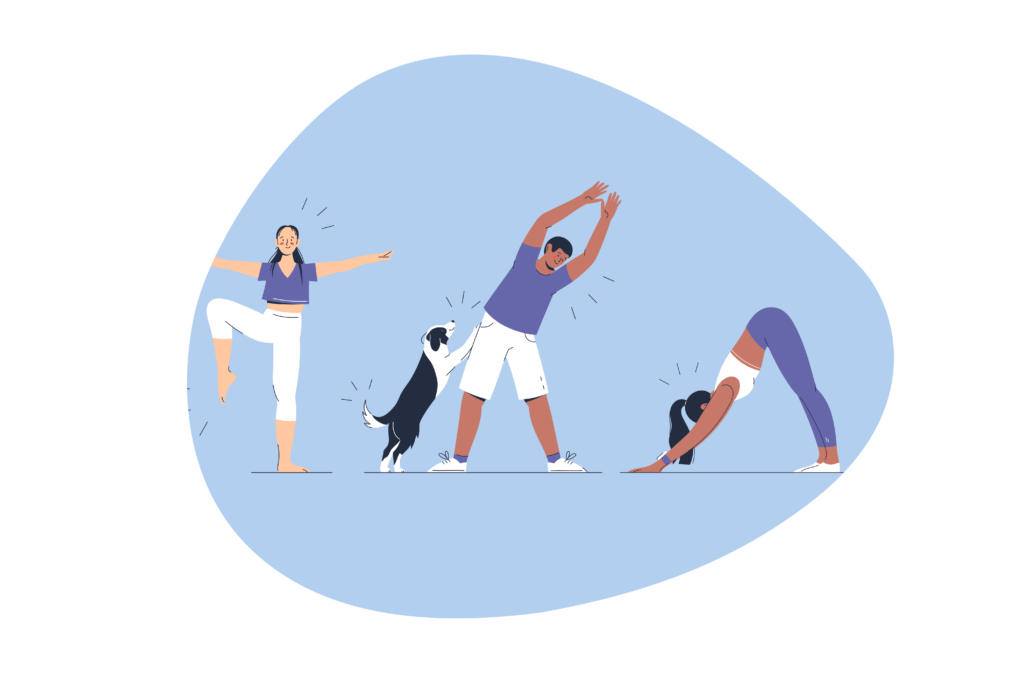
Which sports should you avoid with incontinence?
Firstly, there are certain sports that can cause you to experience incontinence more frequently, especially stress incontinence. For example, high-impact exercise, such as sit-ups and aerobics, can put extra strain on your bladder and therefore potentially cause leaks5. Other forms of exercise to avoid include any sports that involve skipping, jumping and excessive weights and core training.6 Nonetheless, there are still plenty physical activities you can enjoy with an overactive bladder.
Which sports can improve incontinence symptoms?
While some sports can make symptoms of urinary incontinence (UI)worse, there are many bladder-friendly exercises you can enjoy. Activities that strengthen your pelvic floor are ideal if you experience bladder weakness. These include:
As these don’t apply pressure to the pelvic floor,9 you are less likely to leak urine. They can also improve your pelvic floor muscles, thus lessening your incontinence symptoms10. Plus, getting active can help you to lose weight11, which, in turn, can make leakages less frequent. This is because carrying extra weight can put more pressure on your bladder, making UI symptoms worse12. We highly recommend that you speak to your doctor before you take up a new exercise regime.
Tips for playing sports while experiencing leaks
Finally, there are other things you can do to lessen the chance of experiencing incontinence while playing sports. In addition to focusing on bladder-friendly sports, we suggest:
- using a suitable continence product to manage your leaks.
- iD Pants offer breathability and a snug fit to keep you dry and comfortable while you exercise. The topsheet contains natural ingredients improved by dermatologists, meaning you can enjoy peace of mind while wearing these incontinence pants
- Alternatively, iD Light is a discreet liner with a comfortable cotton feel, ideal for an active lifestyle.
- hydration is important, but overfilling your bladder can cause more leaks at the gym
- eating a healthy diet. Not only is this good for your general health, some foods help prevent bladder inflammation. Also, as constipation can make urinary incontinence worse, upping your fibre intake can help relieve symptoms13
- quitting smoking – smoking cigarettes irritates the bladder and can also cause coughing fits (particularly during exercise!), which may cause leaks14
- cutting down on alcohol to avoid dehydration and more concentrated pee, which can also irritate your bladder, by causing dehydration and more concentrated urine.15
We hope this article has showed you that it’s possible, and even beneficial, to continue to play sports when you have incontinence!
What’s the link between bedwetting and ADHD?
ADHD (Attention-deficit hyperactivity disorder) is a relatively common condition that affects a person’s behaviour, which can become evident in childhood, particularly when a child starts school1. In fact, studies show that around 2% to 7% of people experience ADHD globally2. While there are many signs that a child may have ADHD, such as difficulty maintaining attention on tasks, fidgeting and trouble waiting for their turn and sharing3, bedwetting can also be an indicator of ADHD4. Read on to find out why, and how you can manage this combination of issues in children.
What do we mean by ADHD?
Attention deficit hyperactivity disorder (ADHD) is a condition that affects how a person behaves. It is usually diagnosed when a child is under 12 years old, if it wasn’t picked up when they started school initially5. It is a neurodevelopmental disorder, meaning it affects the development of the brain, and refers to a pattern of behaviour that affects a child in most situations6. While symptoms may change as a child matures, the two main signs of ADHD are inattention and hyperactivity7. These can be seen in the following behaviours:
- having difficulty focusing on tasks
- being forgetful
- being easily distracted
- having trouble sitting still
- interrupting others when they’re speaking8.
Despite its commonness, little is known about what causes this condition, but it is believed to potentially have neurological and/or genetic origins9. There is, unfortunately, not just one test to diagnose ADHD, so your doctor will likely assess any ADHD symptoms your child has been experiencing for the past six months, as well as do a physical exam and take a medical history to rule out any other potential causes10.
Furthermore, ADHD is the most common coexisting condition for children with autism, though the two may also be confused due to similar presenting signs11. It’s important to seek help through your doctor if you suspect your child has one or both of these conditions, particularly if you have any concerns. Nonetheless, with the correct support, people with these conditions can lead happy, fulfilling lives12.
How are ADHD and bedwetting linked?
As we said, ADHD and bedwetting can be linked; in fact, the rate of accidents is almost three times higher in children with ADHD19. While it’s not entirely clear why, some research has suggested that this connection may be due to ADHD causing a developmental delay in the central nervous system, which may cause children to not recognise when their bladder is full20. Also, the link between ADHD and bedwetting could be caused by the following:
- a lack of impulse control, causing a child with ADHD to miss their body’s cues that they need the toilet
- changes in sleep due to hormonal changes
- increased stress if a child is always ‘on the go’
- behaviour differences that lead a child to struggle to read their normal bodily cues21.
If your child is wetting the bed due to ADHD, the iD Comfy Junior range is a good option to consider. The iD Comfy Junior Pants are suitable for children from eight to 15 years old. They fit just like normal underwear, offering a great absorbency capacity and maximum discretion and comfort. We highly encourage you to seek a doctor's opinion to learn how to support your child further.
What counts as bedwetting?
Bedwetting is also very prevalent in children, with around 15% of children over seven years old experiencing it13. It can run in families, and most children and young people will grow out of it14. Also known as nocturnal enuresis, it is when a person involuntarily urinates while asleep15. There are many things that could cause bedwetting, including:
- a bladder that cannot stretch enough to hold urine
- not waking up when their bladder sends a signal that it’s full16
- stress17
- an overactive bladder
- constipation
- urinary tract infections (or UTIs)
- family history
- ineffective bedtime routines18.
If you have any concerns about your child’s health, we recommend that you speak to your doctor.
How to manage bedwetting caused by ADHD
Both bedwetting and ADHD can be difficult conditions for parents to cope with. Nonetheless, there are lots of tips and tricks you can follow to help manage nocturnal enuresis, such as:
- encouraging your child to drink enough throughout the day, but limit drinks in the run-up to bedtime
- avoiding caffeinated and fizzy drinks, such as colas, which can stimulate the bladder
- a bedwetting alarm
- a mattress protector and training pants, like iD Comfy Junior Pants, at night-time
- a calendar to track progress and see how well management techniques are working22
- developing a toileting schedule to help your kid to remember to listen to their body’s cues
- encouraging your child to go to the loo right before bedtime23.
With all these tips in your arsenal, you’ll be sure to reduce any distress caused by bedwetting and ADHD.


